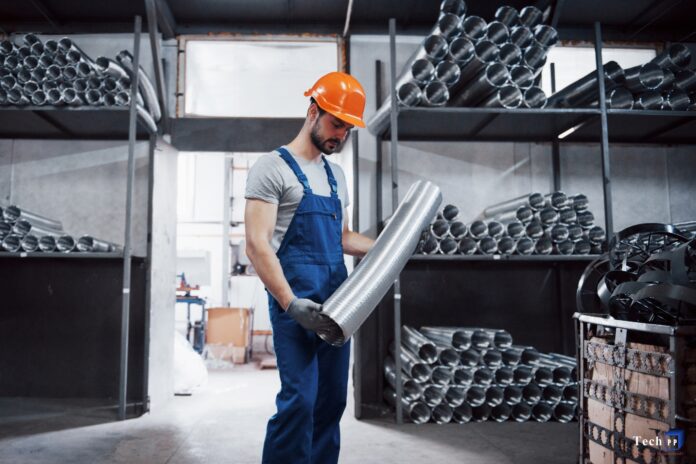Carbon steel tubes are among the most widely used materials in industries that demand strength, durability, and reliability. They serve critical roles in construction, automotive, energy, and water systems. Standards like EN 10224 Carbon Steel Tubes ensure consistent performance, safety, and quality across applications.
To understand why these tubes are so dependable, it helps to explore how they are manufactured, step by step, from raw material to finished product.
Selection of Raw Materials
The journey begins with selecting steel billets or slabs of the right chemical composition. These materials contain controlled amounts of carbon, manganese, silicon, and other trace elements.
The quality of the raw material directly influences the mechanical properties, weldability, and corrosion resistance of the finished tube. Manufacturers committed to global standards always source from trusted suppliers to guarantee consistency.
Heating and Piercing
Selected billets are heated in high-temperature furnaces until they become malleable. This heating process makes the steel soft enough to shape without compromising its integrity.
Once heated, the billets are pierced with a rotary piercing mill to create a hollow shell. This initial step in forming ensures uniform wall thickness and provides the base structure for the tube.
Rolling and Elongation
After piercing, the hollow shells are elongated and rolled to achieve the desired size and thickness. Advanced rolling mills, often using mandrels, refine the tube’s diameter and improve precision.
This stage is critical because it determines the tube’s uniformity and strength. Thanks to modern rolling technologies, manufacturers can produce tubes with exact dimensions and minimal variation.
Heat Treatment
Heat treatment improves the mechanical properties of carbon steel tubes. Depending on requirements, processes like annealing, normalizing, or quenching and tempering may be applied.
These treatments relieve stress, increase toughness, and make the tubes more stable for industrial use. By adjusting heat treatment parameters, manufacturers can tailor the tubes for specific applications.
Surface Treatment
Surface treatment is essential to prepare the tubes for further use. Methods like pickling, shot blasting, or polishing remove impurities, scale, and rust from the outer layer.
Clean surfaces not only improve the tube’s appearance but also make it suitable for coatings or galvanizing. In industries where corrosion resistance is vital, surface treatment ensures the tubes last longer.
Welded Tube Manufacturing
Not all carbon steel tubes are seamless. Welded tubes are created by rolling steel strips or plates into cylindrical shapes and welding them along the seam. Techniques such as Electric Resistance Welding (ERW) or Submerged Arc Welding (SAW) are widely used.
After welding, the seam is inspected and tested to ensure it is as strong as the rest of the tube. Welded tubes offer a cost-effective option without compromising performance.
Testing and Quality Assurance
Every tube must pass rigorous testing before leaving the factory. Non-destructive methods such as ultrasonic testing, eddy current inspection, and hydrostatic pressure tests detect defects and confirm structural integrity. Dimensional checks ensure diameter and thickness accuracy.
Manufacturers following international standards and working with reliable suppliers like uniasen.com place strong emphasis on quality assurance, ensuring tubes perform flawlessly in demanding applications.
Cutting and Finishing
Once quality checks are complete, the tubes are cut to required lengths. Finishing treatments such as beveling, threading, or leaving ends plain depend on the intended use.
For example, beveled ends are ideal for welding applications, while threaded ends are suited for plumbing systems. Proper finishing improves installation efficiency and ensures compatibility with other components.
Coating and Protection
To extend service life, carbon steel tubes often receive protective coatings. Galvanizing, painting, or applying anti-corrosion layers helps the tubes withstand harsh conditions, whether underground, offshore, or in industrial environments.
Internal coatings may also be applied when tubes carry fluids prone to causing corrosion. This final step ensures durability and reliability over long-term use.
Applications of Carbon Steel Tubes
Carbon steel tubes are incredibly versatile. In construction, they provide structural support for buildings and bridges. In the oil and gas industry, they transport fluids under high pressure. In automotive and machinery, they offer strength without excessive weight.
Their ability to be manufactured in both seamless and welded forms makes them suitable for pipelines, pressure vessels, boilers, and countless other applications.
Conclusion
The manufacturing of carbon steel tubes is a precise, multi-stage process involving careful selection of raw materials, heating, forming, rolling, treatment, and rigorous quality testing. Both seamless and welded tubes have unique advantages, but all must meet strict performance standards to ensure safety and reliability.
Standards like EN 10224 reinforce quality, while trusted suppliers guarantee industries receive products they can depend on. From construction to energy, carbon steel tubes remain an indispensable part of global infrastructure, valued for their strength, adaptability, and long-lasting performance.


